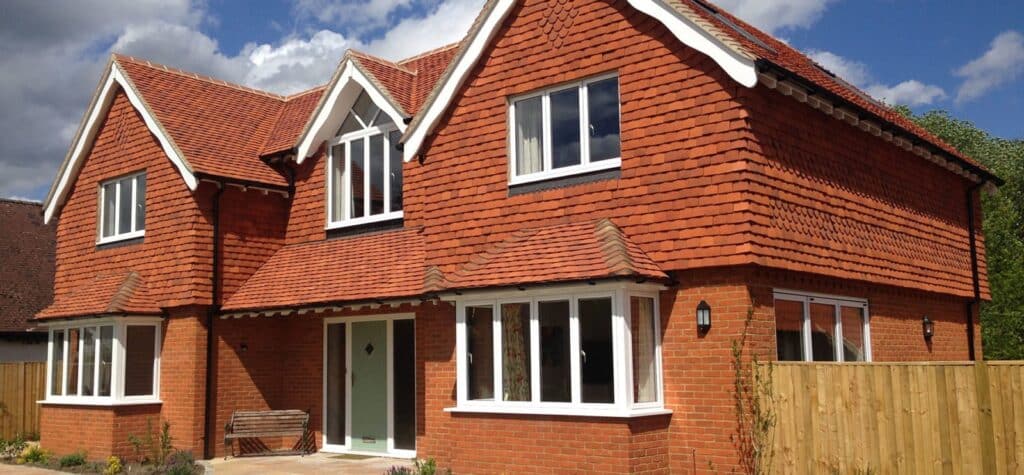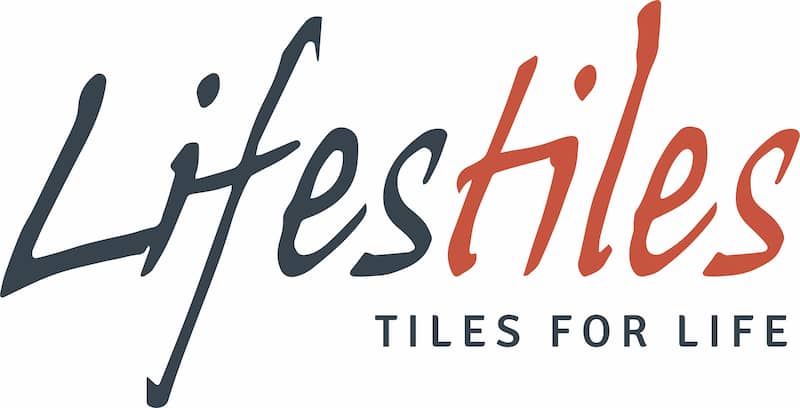Construction materials account for 20% of the UK’s ecological footprint, 19% of the UK’s total greenhouse gas emissions, and 30% of all UK freight transport (Building Futures). In a world where climate change is accelerating, any actions we take now will be felt for generations to come. At Lifestiles, we take our commitment to environmental sustainability seriously. Unsustainable materials such as concrete, resin and plastic are in widespread use in the roofing industry in the UK, but Lifestiles are committed to only using natural products. We consider the environment in all our tiles throughout their life cycle – from their extraction from the earth, right through to their application on roofs. This article will focus on clay roof tiles and slates to showcase their positive environmental credentials.
Clay Roof Tiles
Clay is one of the oldest building materials on earth. These roof tiles have been used above our heads for centuries, shielding homes around the world from the elements. Not only do they lend a natural aesthetic quality to a roof, they are also available in a range of colours that suit the vernacular of many areas in the UK. Clay tiles are a long-lasting option for any roof – the minimum life expectancy is around 60 years according to BRE’s environmental profiling scheme for building. In addition, clay tiles are low maintenance, and if damaged, it is straightforward to repair them. There is no need to replace an entire roof, as broken tiles can be replaced individually.
The Environmental Impact of Clay Roof Tiles
Clay is a naturally occurring resource, found mainly on or near the surface of the Earth. Clay minerals form in a variety of environments, including marine sediments, volcanic deposits, and weathering rock formations. Most form where rocks are in contact with water, air, or steam. Clay tends to be extracted in close proximity to the manufacturing plants, which significantly reduces the environmental footprint of clay tiles through minimising the fuel needed to transport the raw material to the processing plant. Perhaps most significantly, clay tiles, if properly salvaged, can be reused. These tiles are known as reclaimed tiles, and their weathered aesthetic provides a beautiful roofscape for period and prestige properties.
How Clay Roof Tiles Are Sustainably Made
Clay roof tiles around the world are made using a similar process. Clay is taken from quarries or clay pits and broken down into small grains. Moisture is added to achieve the correct consistency, the clay is shaped into the required size, and sand is added to change the colour of the tile. The shaped clay is then dried and baked to ensure durability and resilience against the elements. While clay is a natural and long-lasting resource, the kiln process is the most energy-intensive element of clay tile production.
However, modern advances in tile production can dramatically reduce this environmental impact. For example, a roller hearth kiln can fire tiles in 90 minutes by passing the tiles through a series of burners. It is also possible to recapture excess heat generated in the drying process for use in firing the tiles, a technique known as co-generation. Waste products can also be reintroduced into the manufacturing process, such as pre-fired clay waste and manufacturing rejects. Even water used to wash the tiles can be stored and recycled back into the creation of more tiles.
Environmental Advantages Of Clay Roof Tiles
- Large reserves
- Reusable
- Recyclable
- Durable

Roof Slates
Slate is formed out of fine-grained metamorphic rock, which is made up of sedimentary or volcanic ash deposits. Like clay, it is a material which has been used for centuries, and it is very popular in roofing due to its low water absorption index and elegant appearance. Spain is the leading slate exporter worldwide, producing 90% of Europe’s slate – however, slate can also be found in the UK, in areas such as Wales, Cumbria and Cornwall. Lifestiles source Welsh slate from Cwt-y-Bugail and Penrhyn quarries in Wales, and Spanish slate from Cupa Pizarras, the world leaders in natural slate. Slate is incredibly durable and has a lifespan of 100+ years, meaning that it is not single-use.
The Environmental Impact of Roof Slate
As slate is a natural resource, the manufacturing process produces minimal emissions of carbon dioxide and other greenhouse gases. The slate is refined through manual working processes without the use of chemicals or artificial materials. To minimise environmental damage during the production of slate, manufacturers such as Cupa Pizarras restore the original landscape by means of the hydro-seeding of native plants, supported and monitored by agencies such as the Ministerio para la Transición Ecológica y el Reto Demográfico.
How Roof Slates Are Sustainably Made
The extraction process of slate is very delicate, as the slate can be damaged if not carried out carefully. The slate is excavated, often using precise explosives to extract slabs. These are then cut into smaller chunks using a diamond-tipped blade. The smaller pieces are split into certain thicknesses by hand using traditional techniques that have been used for hundreds of years. This requires a great deal of skill to identify natural breaks in the stone, or there is the risk that the slates could split unnaturally and be unusable as a result. The first time that a machine can be introduced to the process is in the trimming of the slabs, which can also be done by hand. This results in the slates being specific and uniform lengths, ready to be graded according to their thickness and shade. These vary according to the manufacturer and can be used on different areas of a roof such as the eaves, middle and ridges.
Environmental Advantages Of Slate
- Highly durable
- Reusable
- Recyclable
- Depending on where it’s sourced, low embodied energy



